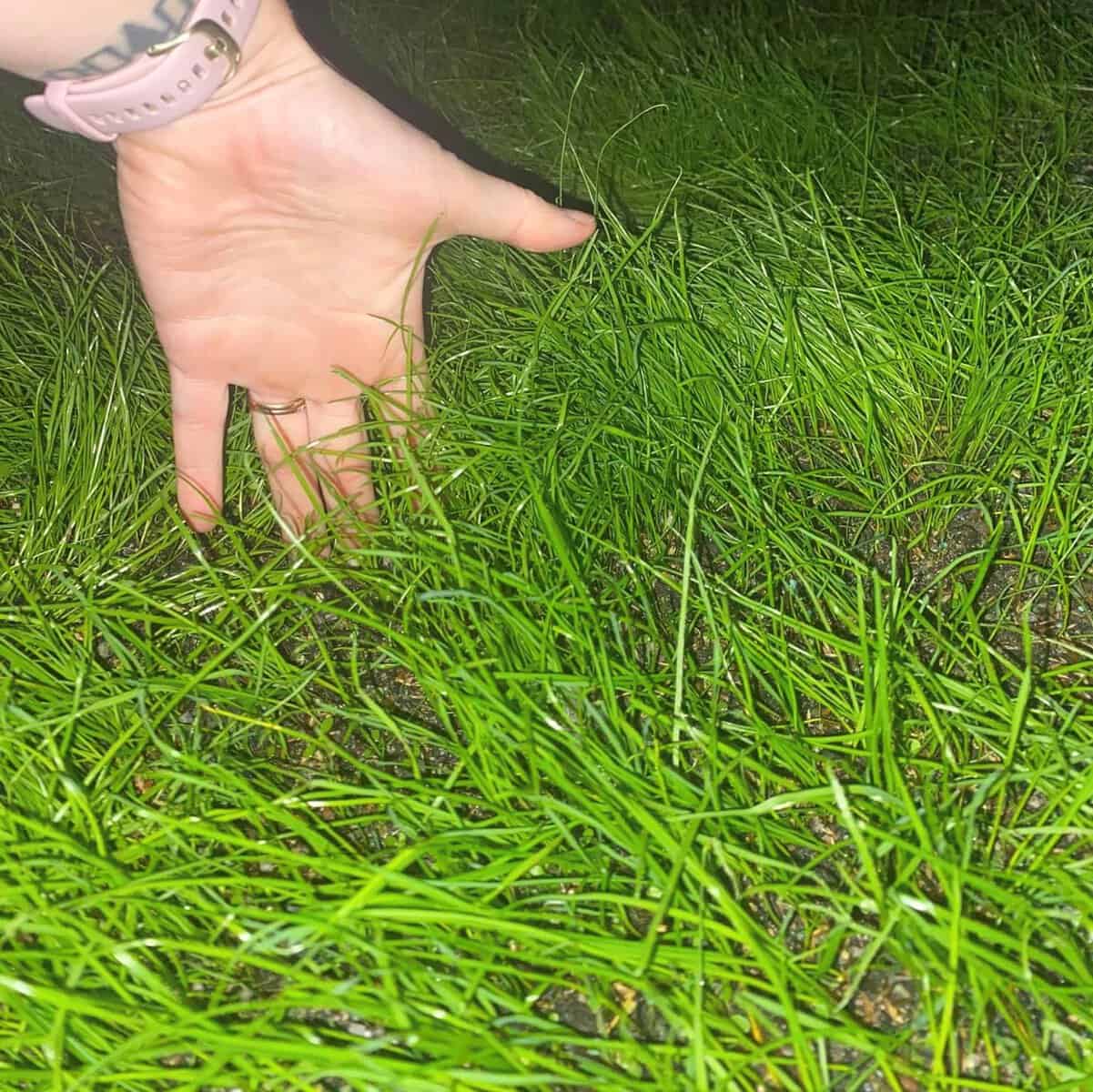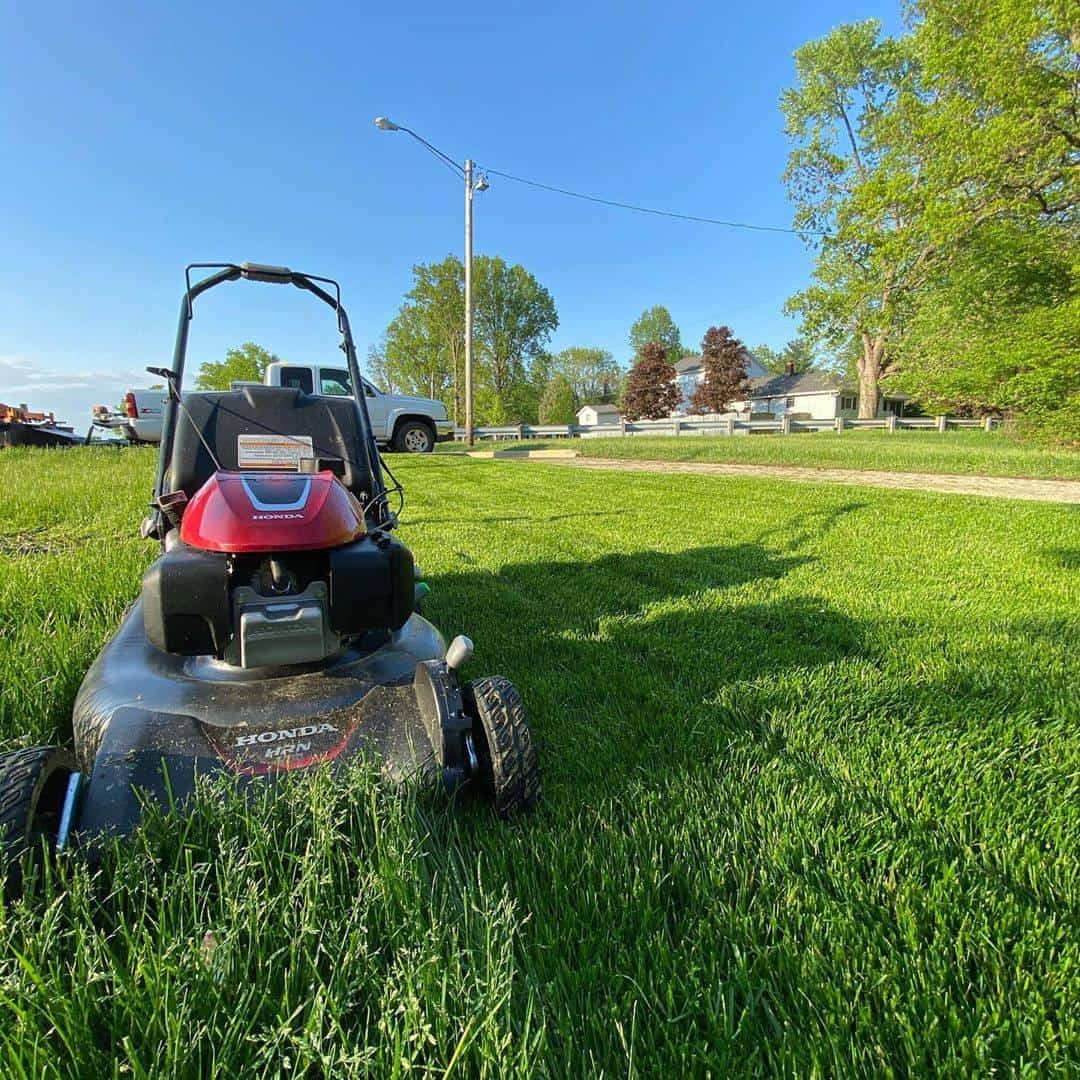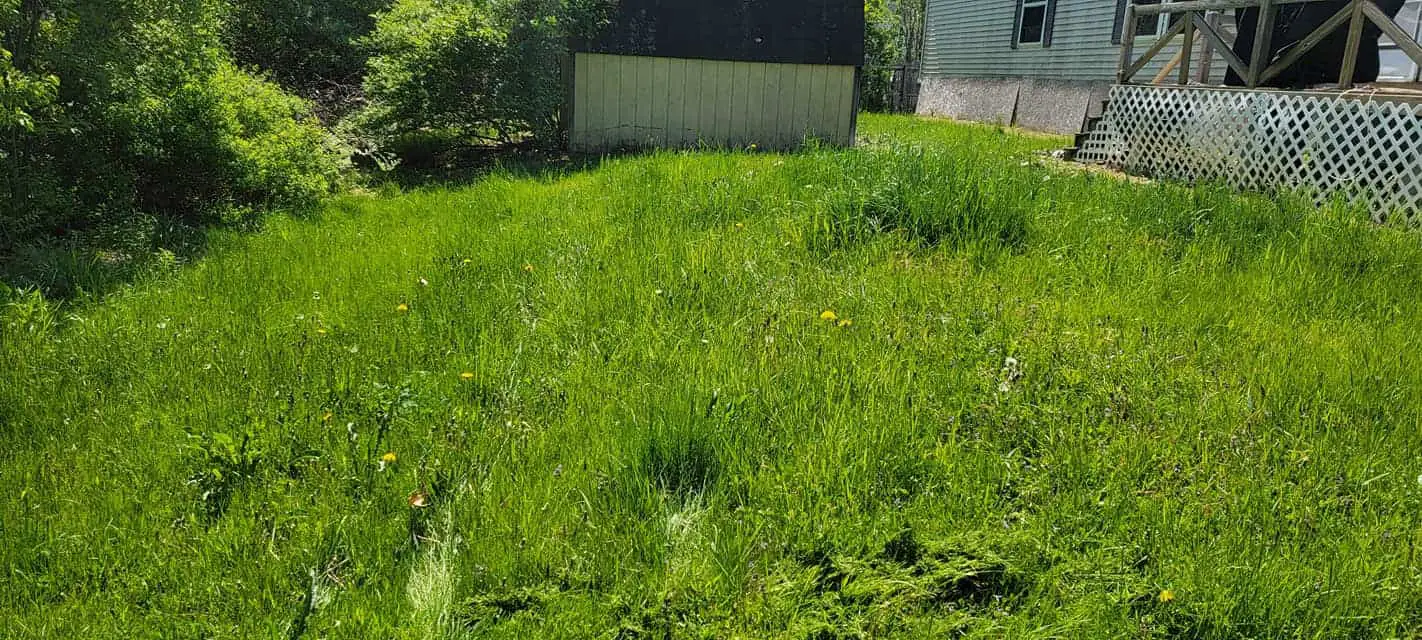Hello mate!
Maintaining a manicured lawn includes regular mowing, but what happens when the grass is overgrown and reaches heights? Can a lawn mower cut tall grass?
In this comprehensive exploration, we dive into the capabilities and limitations of mowers in the face of tall grass.
Join us for lawn mower strategies to get the best results possible!
Contents
Can A Lawn Mower Cut Tall Grass?

The answer is Yes. The lawn mower can cut grass up to 4 inches tall. But it’s essential to consider the condition of the grass, mower capabilities, and potential challenges like blockages or uneven mowing.
Read on for a more detailed answer!
How High Of Grass Can A Lawn Mower Cut?
Generally speaking, most standard push- or self-propelled rotary mowers can mow the lawn at a height of about 3 to 4 inches.
These mowers usually have an adjustable cutting platform that allows you to set the desired cutting height. The specific adjustment range will vary depending on the model of the mower.
So grass longer than 4 inches will make the cutting process difficult. Grass that is too long can clump or lie down, preventing the mower from cutting evenly.
We recommend maintaining a mowing height of 2.5 to 3.5 inches for most grasses for optimal health.
Yet, it is vital to consider the specific requirements of the grass species in your lawn, as different types have different ideal heights.
For example, warm-season grass like Bermuda grass or Zoysia grass can be kept shorter, while cool-season grass like Kentucky green grass or fescue can benefit from a slightly higher cut.
Besides tall grass, many mowers these days also help you to pick up leaves!
When Not To Cut Tall Grass With A Lawn Mower?

Although mowers can cut tall grass, there are cases when you shouldn’t do so. Here are some examples:
In wet or humid conditions
Wet grass tends to clump together and can clog mower floors or drains. This problem can lead to uneven cuts and possibly damage to the machine. Also, wet soil can compress under the mower, leading to compaction problems.
In dry conditions
Mowing in dry conditions can lead to dehydration and damage to the lawn. Thus, wait for more favorable conditions or consider watering the grass before cutting to avoid stress.
In hot weather
Cutting tall grass in hot weather can be demanding and potentially harmful to the mower operator. Extreme heat can lead to dehydration, heat exhaustion, or even heatstroke. Thus, choose early morning or late evening to do this task.
Weed infestation or seed dispersal
If tall grass is infested with weeds or has reached the seeding stage, mowing has the potential to spread weed seeds or facilitate a weed dispersal problem.
In such cases, it’s a good idea to address the weed problem before mowing or consider alternative methods, such as hand weeding or spot treatment.
On steep slopes or uneven terrain
Uneven ground can make it challenging to use the mower, increasing the risk of accident or injury. In such situations, you should use a specialized lawn mower designed for slopes or hire an expert with the right tools and expertise.
How To Mow Tall Grass?

Before starting, clear any debris, rocks, or large objects that could damage the mower or cause an accident in the cutting area.
If the grass is too tall, consider using a trimmer or lawn mower to reduce the height of the grass before mowing.
First, set the mower’s cutting height to the highest setting available. This tip helps avoid mowing the lawn too short in one turn, reduces stress, and prevents scabs.
When mowing tall grass, take your time and cut at a slower pace. The goal is to make the lawn mower’s blades more efficient and reduce the risk of clogging. Rushing through tall grass can lead to uneven and missed cuts.
Then you gradually reduce the cutting height at subsequent cuts until you reach the desired grass height.
We recommend leaving debris on the lawn instead of bagging them during this process.
After cutting, ensure to clean the floor and blade of the mower thoroughly. Grass clippings and debris can build up and interfere with mower performance.
However, remember to prioritize safety while mowing tall grass. We recommend wearing appropriate protective gear, such as closed-toe shoes, long pants, and goggles.
Also, keep a distance from bystanders and pets and be cautious on uneven terrain.
What Are The Downsides Of Mowing Tall Grass?

So does cutting tall grass have any effects? Let’s find out with us!
Clogging And Uneven Cutting
Thick and long grass can easily clog the mower deck or discharge the chute, impeding the proper flow of debris.
This problem can lead to grass patches, resulting in an uneven and messy appearance. Also, clogging can strain the mower’s motor and reduce its cutting efficiency.
To minimize these problems, it’s a good idea to mow tall grass slower, do it several times, and clean the mowing floor periodically to avoid excessive build-up.
In cases like these, we recommend using specialized mowers for thick grass. Also, ensuring the mower blade is sharp can help promote a cleaner and even cut.
Increased Strain on the Mower
Dense grass needs more power to cut through, increasing the workload on the mower’s motor. This process can lead to higher fuel consumption and the possibility of overheating.
The added stress can accelerate wear on the mower parts. Hence, it is likely to lead to mechanical problems or the need for more frequent maintenance.
Can You Cut Tall Grass With A Reel Mower?

We do not recommend this. Reel mowers are typically designed for shorter grass heights and are challenging to cut through thick and tall lawns.
The narrow cutting width and limited power of reel mowers make them less effective at handling tall grass.
So when cutting tall grass with a reel mower, the grass may not be even and may be partially missed or bent.
Conclusion
Can a lawn mower cut tall grass? The answer is Yes. Although mowers are designed to handle grass at various heights, mowing tall grass needs careful attention and a suitable method.
Hence, you can effectively manage tall grass and maintain a beautiful and healthy lawn by following recommended practices and safety priorities.
If you need any details about gardening, do not hesitate to reach us. Thank you for reading!





